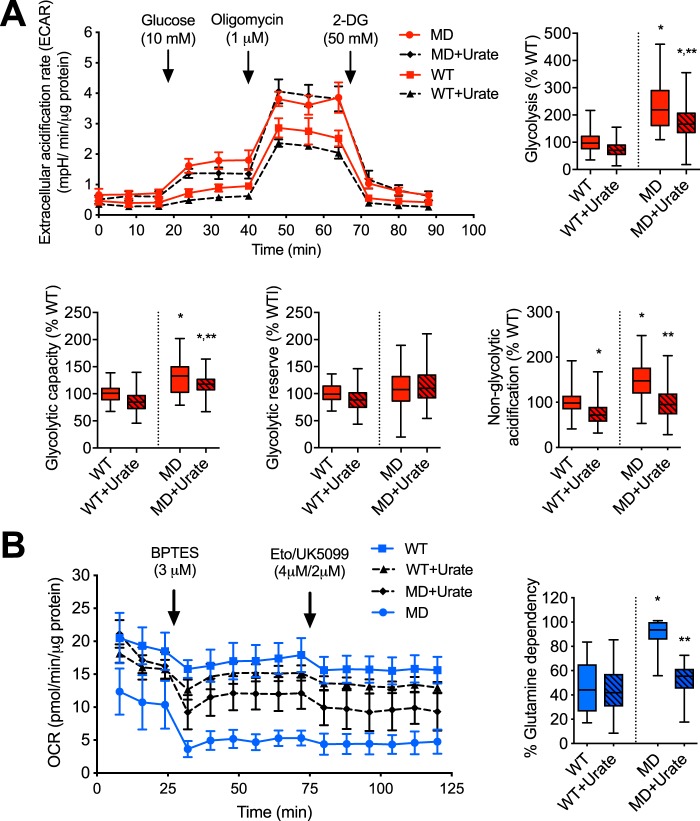Figure 7.
Peroxynitrite supports a metabolic shift toward glycolysis and glutamine dependence in human MD-Schwann cells. A, human WT- and MD-Schwann cells were cultured in the absence and presence of urate (100 μm) for 48 h before measuring the extracellular acidification rate (ECAR). Glutamine (1 mm) was added to the culture media followed by the sequential addition of glucose (10 mm), oligomycin (1 μm), and the glycolysis inhibitor 2-deoxyglucose (2-DG), as shown in the representative experiment on the left (mean ± S.D. of 5 replicates). On the right, analysis of the different parameters after the addition of substrate and inhibitors, expressed as percentage of WT-Schwann cells (n = 4 with 5 replicates). *, p < 0.01 versus untreated WT-Schwann cells; **, versus untreated MD-Schwann cells by Kruskal-Wallis test followed by Dunn's post test. B, the percentage of glutamine dependence of human WT- and MD-Schwann cells incubated in the absence and presence of urate for 48 h was determined by assessing the OCR in basal conditions and after the sequential addition of BPTES (3 μm), and Etoximar (4 μm) and UK5099 (2 μm), as shown in the representative experiment on the left (mean ± S.D. of 5 replicates). On the right, glutamine dependence expressed as percentage of WT-Schwann cells (n = 4 with 5 replicates) is shown. *, p < 0.001 versus untreated WT-Schwann cells; **, versus untreated MD-Schwann cells by one-way ANOVA followed by a Bonferroni post test.

